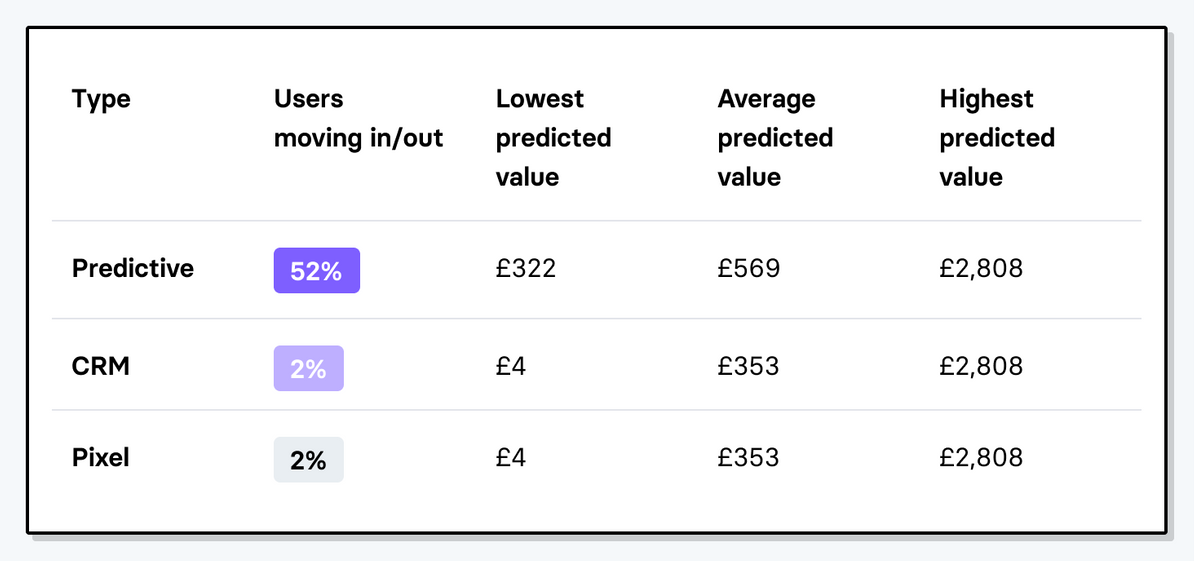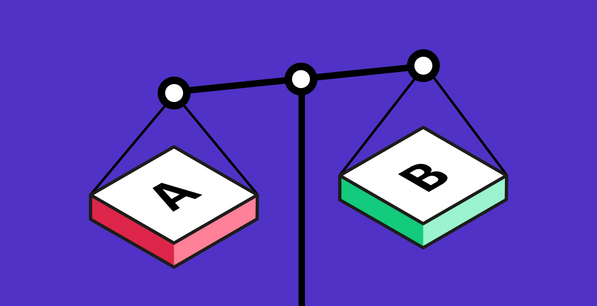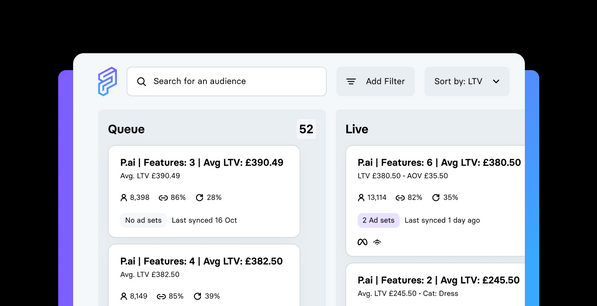There are brands out there who spend up to 70% of their Facebook acquisition budgets on lookalike audiences. Since the rollout of iOS 14.5, this figure has barely changed.
Performance, on the other hand, has been rocky – fractured by the battle between Apple and Facebook, plus the unstoppable slide towards Privacy First.
But enough of that. This is about you, and how you can smooth the edges in the ad platforms to improve performance.
If you’re struggling with volatile CPMs and skyrocketing CPA, read on for a blueprint for your lookalike strategy.
Running order:
- How to optimise signal input
- Pixel-based vs. CRM vs. predictive seeds
- Audience output: how to set your lookalike output against business goals
- Targeting: how to structure campaigns around trade-offs
Step 1: Signal input
Improving your signal input should be the first step to getting more customers you want more of. After all, lookalikes will be populated by Facebook with users that look like those in your seed audience.
If your seed audience consists of site visitors who have bounced, the lookalike audience will also contain users who are likely to bounce. Poor signals lead to a poor lookalike audience, which in turn leads to poor performance.
Align with the business on what metrics to prioritize – high customer lifetime value, low churn probability, or high profitability – and exclude the customers who don’t hit the mark. Stick with customers who you think will continue to buy from you. Or, look for the ones who are showing signs that they’ll become like your best.
Step 2: Go Predictive!
To get the best quality output, you need two things:
- Continuously refreshing audiences (i.e. no more static data)
- A focus on predictive lifetime value
Traditionally, CRM and pixel-based audiences were the default choice for lookalikes. The pixel-based lookalike is easiest to set up natively in the Facebook UI, and most CRMs allow you to sync a seed audience into Facebook through an integration. Neither use predictive data.
But things are changing.
Predictive lookalikes are nipping at the heels of CRM and pixel-based lookalikes – offering a higher velocity to get in front of more of your ideal high-value customer.
To put this to the test, we analyzed the predicted value of predictive seeds against CRM and pixel-based seeds across Programmai marketers.
The power of predictive isn’t hyperbole. Predictive seed audiences have a 60% higher average predicted value than CRM seed audiences and 140% more than pixel-based seed audiences.
With predictive, you can:
- Choose and find more people like the past year’s highest spenders or all recent converters
- Exclude historically high-value customers at risk of churn from your seed audiences
- Or, prioritise new customers who are predicted to be high lifetime value
Not only does this help you better understand customer trends and signals in real-time, but it also reduces the risk of saturating your audiences with the lookalike.
Customers will drop in and out of your seed audience according to their behaviour, filtering out one-time or discount buyers so you can focus on your ideal high-value customer.
Step 3: Audience output
Once you’ve improved your signal input, let’s move onto your lookalike audience.
Once you’ve chosen your region, Facebook will pick the top % users across your selected countries. The more specific your geography, the better your chances of targeting the right people.
Half the battle of improving Facebook lookalikes is choosing the percentage of Facebook users you want to include in your audience. Generally, bigger is better – a 20% lookalike is ideal in most cases.
If your conversion volume is too low (generally <50 conversions a week), the bidding algorithm may struggle to learn. In this case, go for a smaller lookalike audience.
Step 4: Combine lookalikes into a ‘super’ lookalike
The way that you structure your campaign setup is key to getting the best results.
Combining lookalikes into a ‘super’ lookalike and targeting on a single ad set will give you the best performance. With a super lookalike, you’ll minimise the overlap between ad sets and keep learning events intact.
The only drawback of a ‘super’ lookalike is that it won’t show you which individual lookalikes perform best.
If you need to see the performance of each lookalike, build separate ad sets. You’ll gain the ability to measure the quality of customers acquired by each lookalike/ad set and use insights to optimise bidding and budgets.
- Set a lower CPA for customers with a low (predicted) lifetime value
- Get ready to pay more for customers who are predicted to become loyal customers
- Tailor the creative against your audience, if geared to a specific subset of customer
Programmai marketers will usually target lookalikes separately to validate them individually, to then add the ‘winners’ on a merged super lookalike.
The future of Marketing is Predictive!
Activating your first-party data and adding predictive intelligence can be tough to pull off. Chances are that your data science team can create the predictive models – but managing multiple predictive lookalikes and audience creation across channels is another story.
In Programmai, build predictive audiences with control over your seed. Segment with confidence. Acquire tomorrow’s best customers today.



